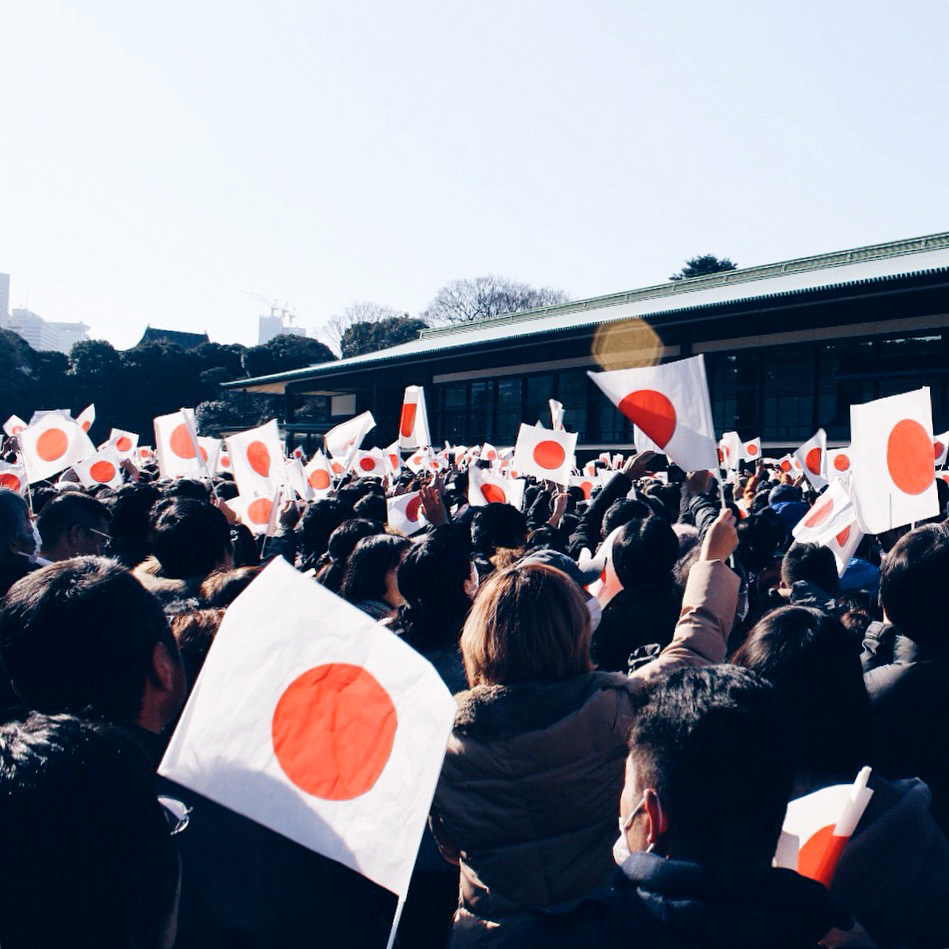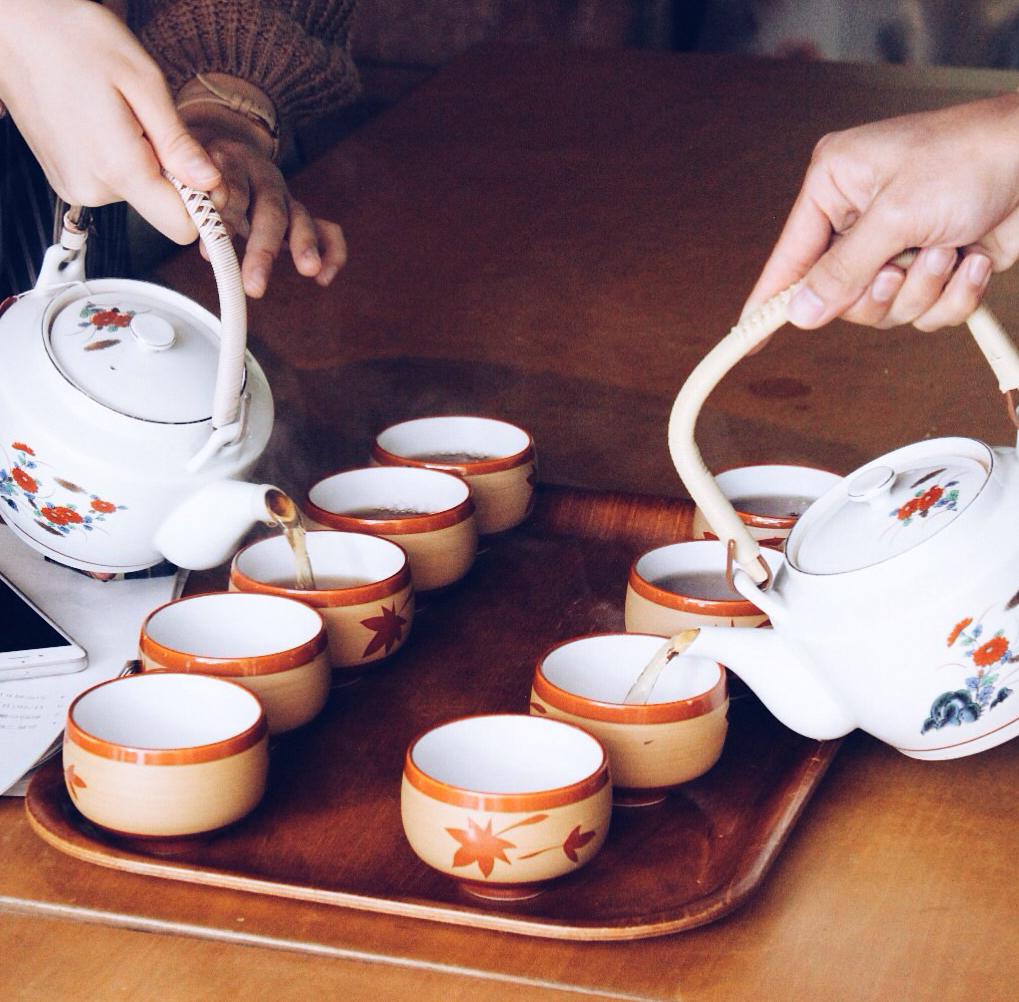Inês is 22 years old (almost 23, next Monday), is an architecture student and has been in Tokyo for nine months, through an exchange program with the University of Tokyo, subsidized by the Japanese government to do the last year of the master’s. She decided to go to Japan for the opportunity to explore the other side of the world, learn the Japanese language and do an internship in a Japanese studio.
What expectations did you have of the city and the country before arriving? Is the reality similar to these expectations?
I heard that I had been accepted into the program in October and in November I was already in Tokyo, which didn’t give me much time to create expectations. In fact, I think it was better this way: I had no idea of what I was going to find nor had I done much research on Japan, so everything surprised me when I arrived. The only expectations I had were in relation to Japanese architecture and then yes, the experience exceeded all expectations!
What do you like most about Tokyo?
The cleanliness and organization of the city and the punctuality of the transport network left me speechless, especially when I think that it is the largest megacity in the world, with almost 38 million inhabitants – and all the management that this implies. And security! In 9 months there was not a time when I felt insecure. But above all, what I like most about this city is the opportunity to see and learn something new every day.



And what do you like the least?
The language barrier proved to be complicated. Something bureaucratic like opening a bank account or registering with the City Hall becomes even more challenging with communication difficulties. I also don’t like the fact that the transport network closes around midnight, when the city lives 24/7.
How do you characterize the Japanese?
Especially in Tokyo, they are people who live a lot of professional life and little personal. They are also the most polite and honest people I know – it is the best place in the world to lose your wallet or cell phone because, in fact, you never lose anything. And although they are inflexible, not very warm and the vast majority do not speak English (none!), they are very helpful and try to help whenever they can, even if it means speaking mime or taking you to the place you asked about. And since Japan is one of the countries with the least cultural diversity in the world (98.5% of the population is Japanese), I never felt uncomfortable or more; there is even some fascination and admiration for Westerners.



How is a normal day for you there?
From Monday to Friday I take Japanese classes and work on my thesis. I am very close to the Campus so I go by bike every day, it is great and I avoid transportation during rush hour. I always try to save a day of the week and the weekend for exploring Tokyo or taking trips with friends.
If someone were to visit Tokyo and had only 3 days, what would you suggest seeing and eating?
The city is huge so I think the ideal is to divide the days by zones and try to cover as much on foot:
On the first day, visit the Harajuku area, walk the Takeshita Dori (street), the Meiji Shrine, explore the architecture on Omotesando Avenue, relax in Daikanyama and end the day in Shibuya (on the famous Shibuya Crossing, the busiest crosswalk in the world, crossed by 2500 people per minute).
On the second day, see Asakusa‘s historic district, Ueno Park, Ameyoko market, watch the sunset at Bunkyo Civic Center, ride a roller coaster at Tokyo Dome City and end the day in Shinjuku (at Golden Gai or in Kabukicho, the red light district of Tokyo).
On the third day, eat a sushi bowl for breakfast at Tsukiji Fish Market (the largest wholesale market for fish and seafood in the world), stroll in the incredible Hamarikyu Gardens, walk through Ginza along Chuo Dori (street), visit the imperial palace gardens, watch the sunset over Tokyo Station on the terrace of the Kitte building and end the day in Akihabara (in the electric / geek town).
Sushi, ramen, tempura and tonkatsu are my dining choices – there are restaurants around every corner.




Do you have any tips on how to save money in Tokyo?
Take advantage of convenience stores to buy snacks and coffee, make your own meals or buy them in supermarkets at the end of the day – the Japanese are very concerned with food security and after 6pm they make discounts of up to 50% to drain all the stock in the day. If it is possible to get a credit or debit card that does not cover commissions, it makes a lot of difference. Please note that it is only possible to withdraw money with foreign cards at some convenience stores (7-Eleven and Family Mart).
Sites like Tokyo Cheapo, Odigo or Time Out Tokyo also offer great tips and are aimed at a young audience.
What is the biggest tourist trap in the city?
The best known observatories like Tokyo Skytree or Tokyo Tower, because the entrance is very expensive and the lines are endless. Despite being considered landmarks of the city, there are many other observatories with free entry and almost no tourists, with equal or better views. My favorite is on the 25th floor of the Bunkyo Civic Center, where the view is spectacular and the angle of the glasses allows you to take incredible pictures – the proof of this is the various Japanese photographers I usually see there.


In which areas of the city should we look for accommodation and why?
Shinjuku, Shibuya and Tokyo Station are lively, central areas with more hotels and direct connections to airports. The neighborhoods of Daikanyama, Harajuku and Shimokitazawa have more personality and are calmer, despite the proximity to major centers. At the limit, I would recommend staying close to one of the stations on the Yamanote Line, the main line in Tokyo that defines the city center.
What are the best places to go out at night?
Shibuya has the largest variety of bars and clubs and also has izakayas (Japanese snack bars) and ramen shops open for 24 hours to end the night.
What is your favorite place?
Tsutaya Books in Daikanyama. It is in one of my favorite neighborhoods, on a street with an immense architectural heritage and has a really good atmosphere. This store is part of a chain of bookstores that I love, where almost all books and magazines can be consulted even without being bought and can be accompanied by a coffee.


You can’t leave Tokyo without …?
Going to a kaiten sushi restaurant! Fresh and delicious sushi on a treadmill, at great prices. There are some where you order from iPads and others where you ask the chefs who are preparing sushi in the middle of the room.


A big thank you to Inês, useful for everyone, we already know, but luckily I will be able to follow her advice very soon because in November I will take a two week trip through Japan and I can’t wait to visit all these places she talks about! 🙂
If you liked this post and want to read more about my trip to Japan, you can visit the following posts:





